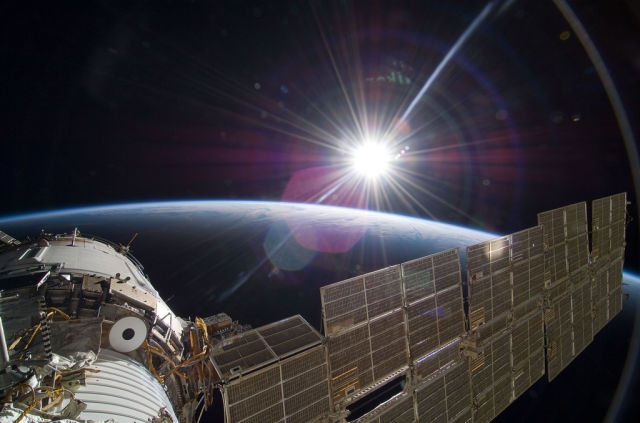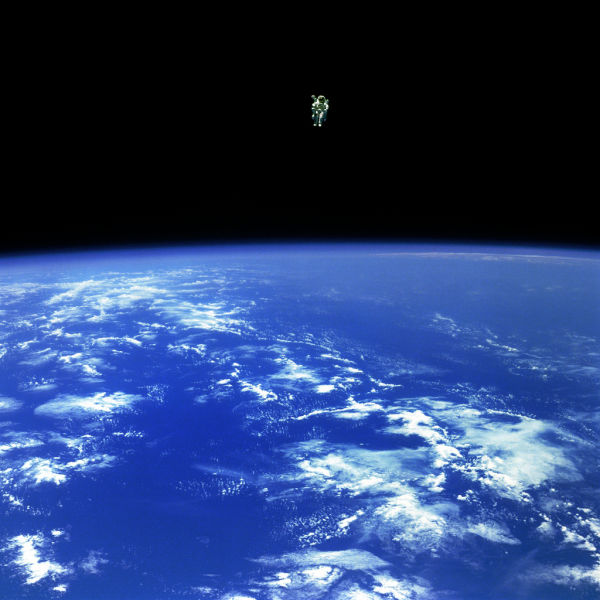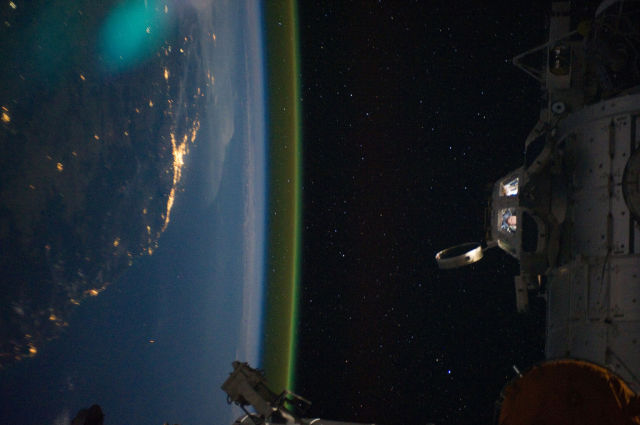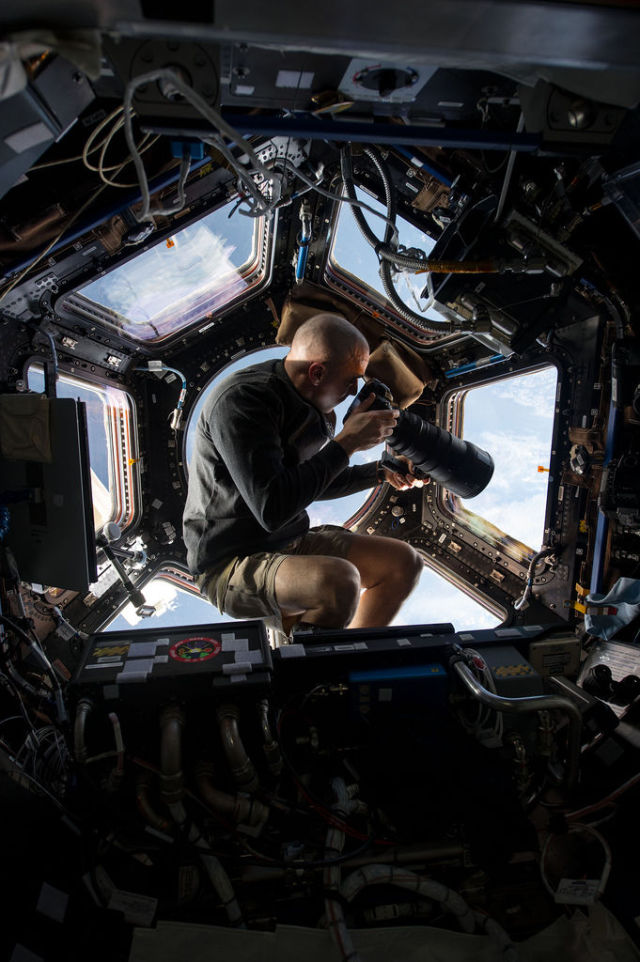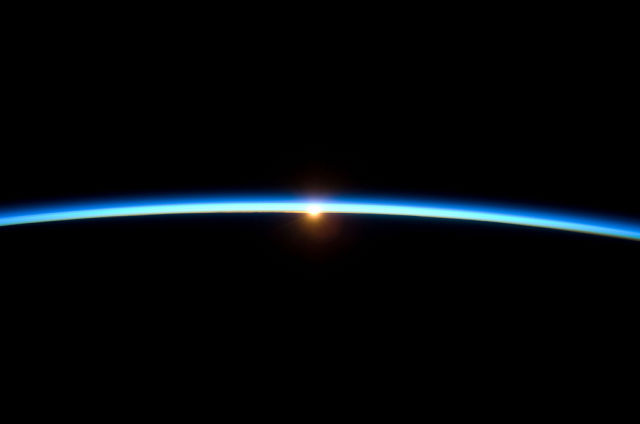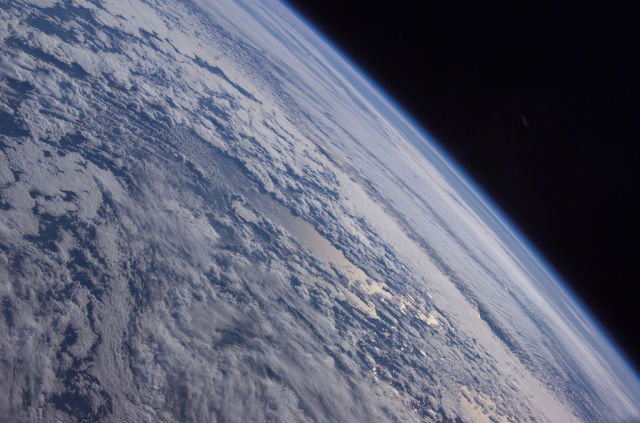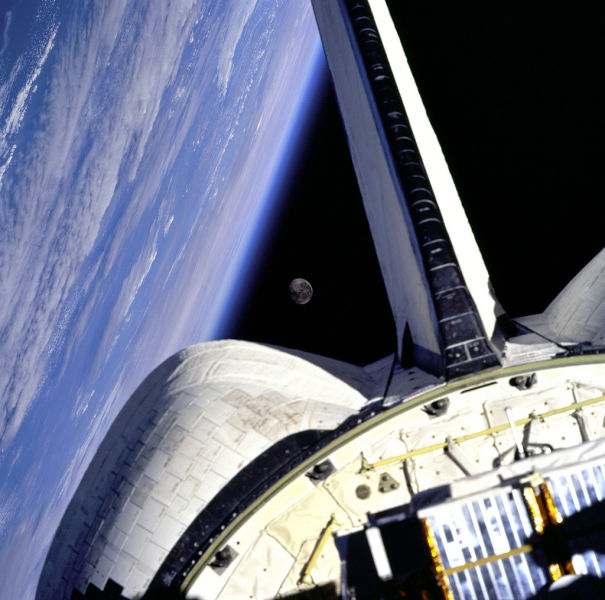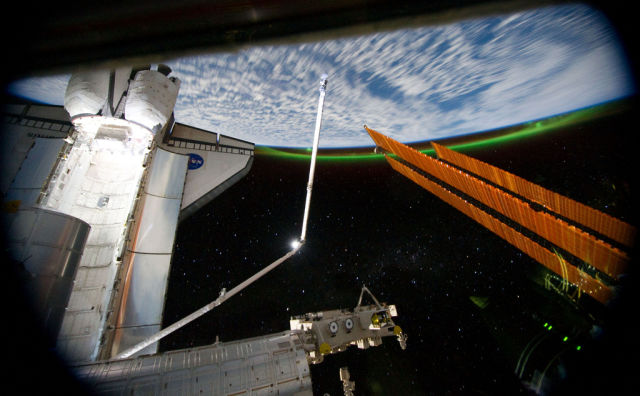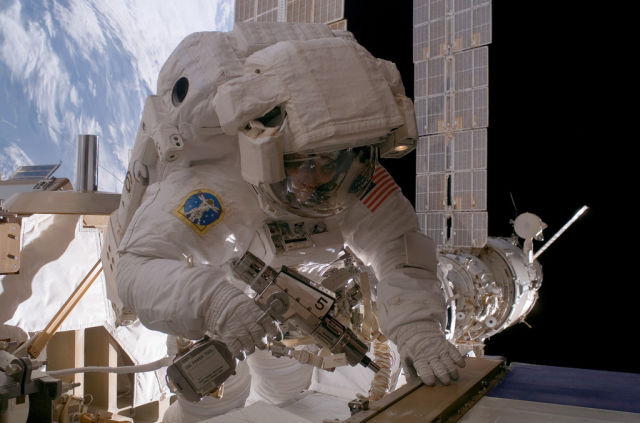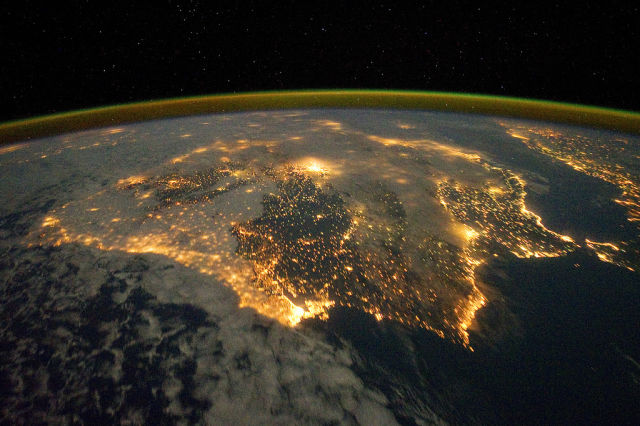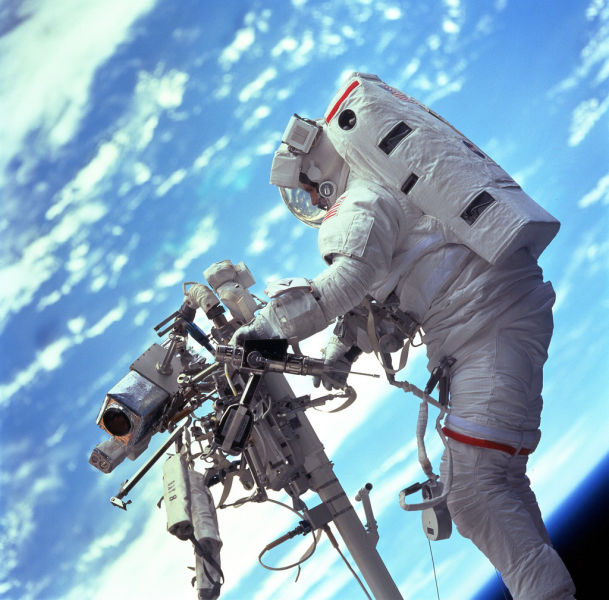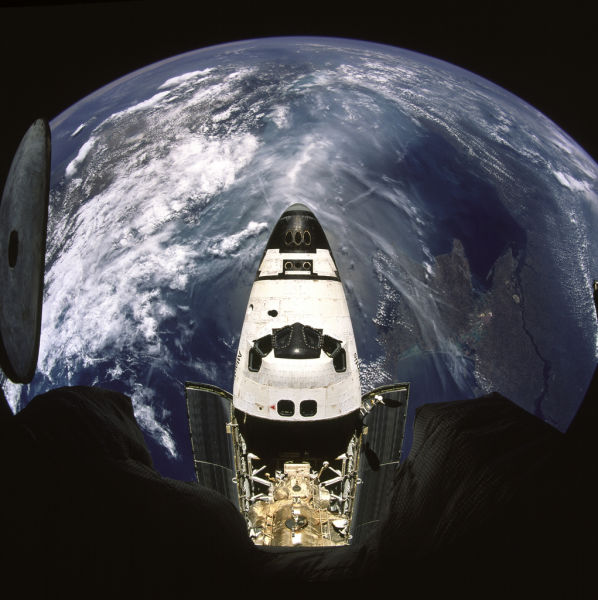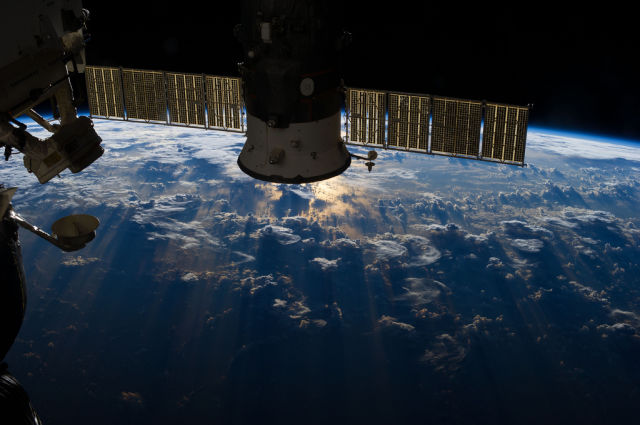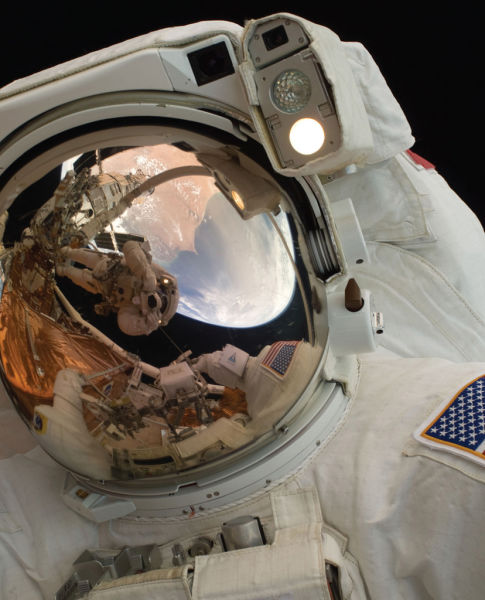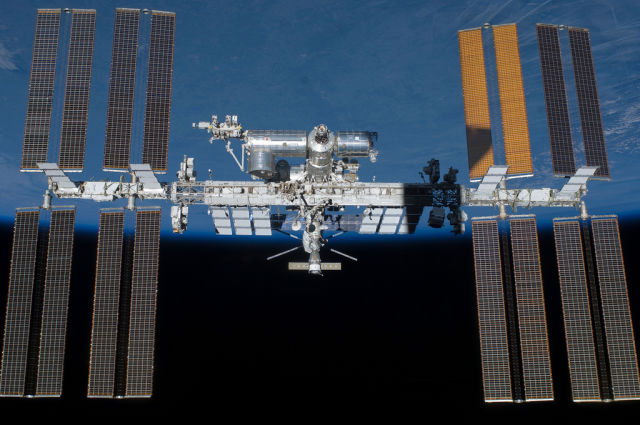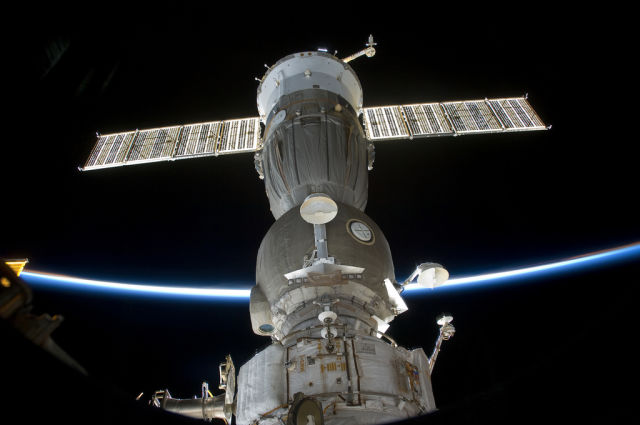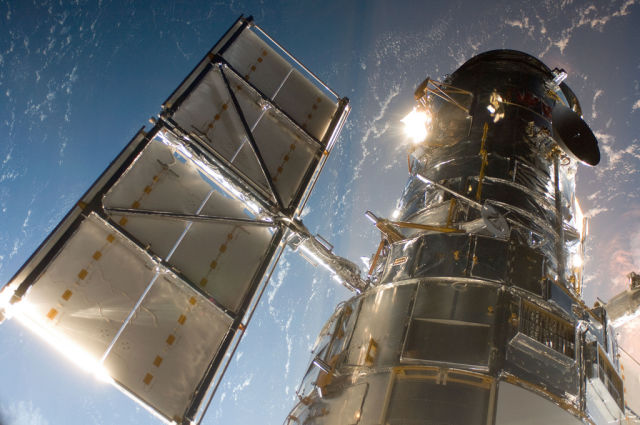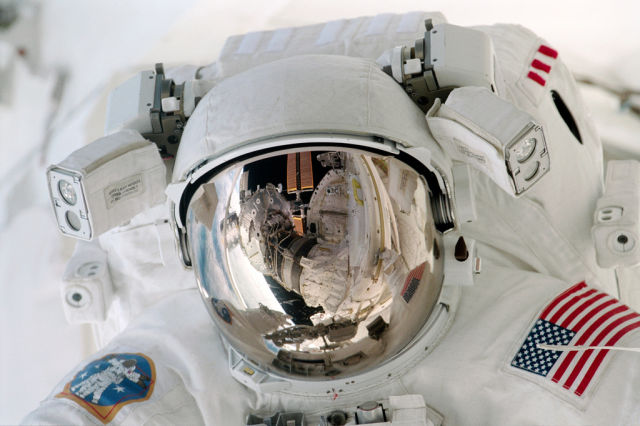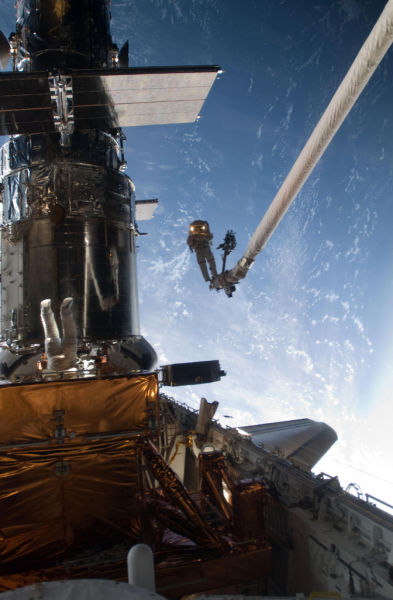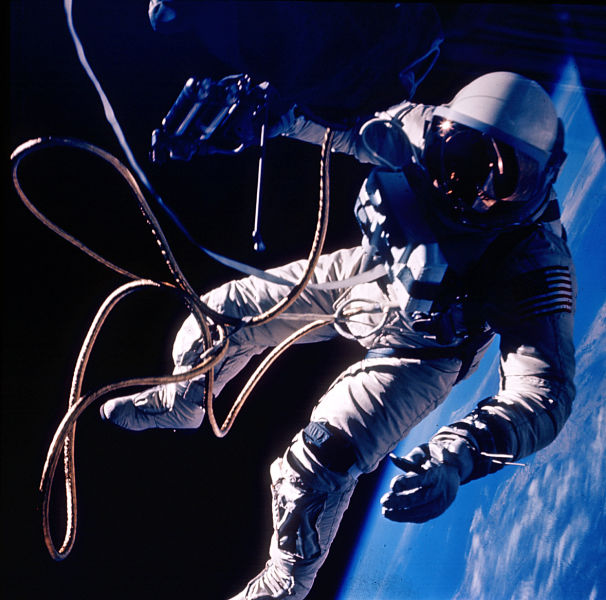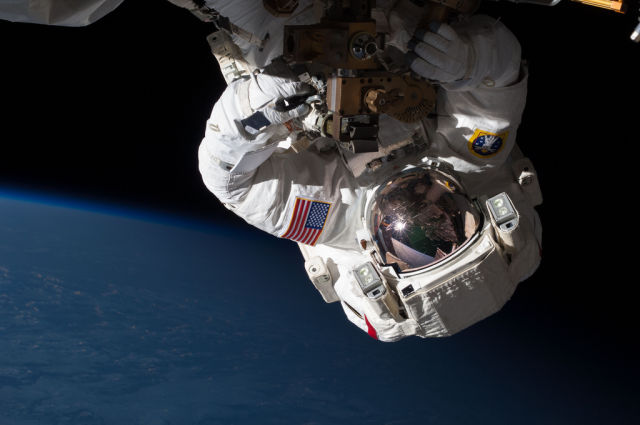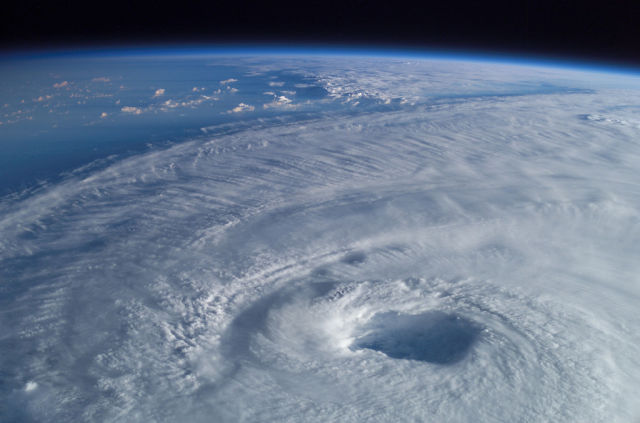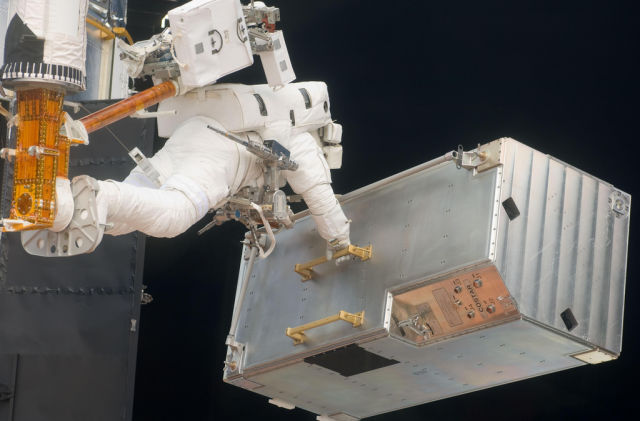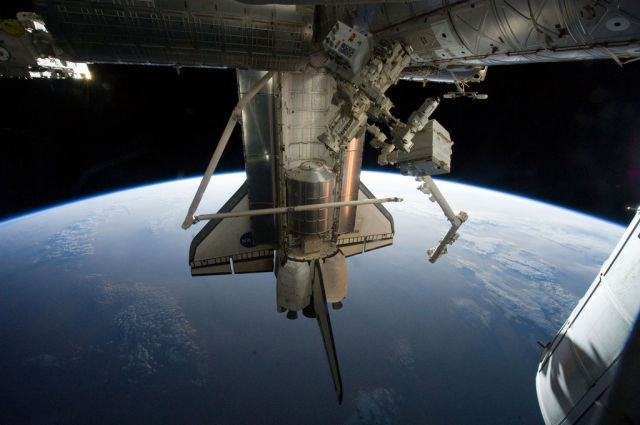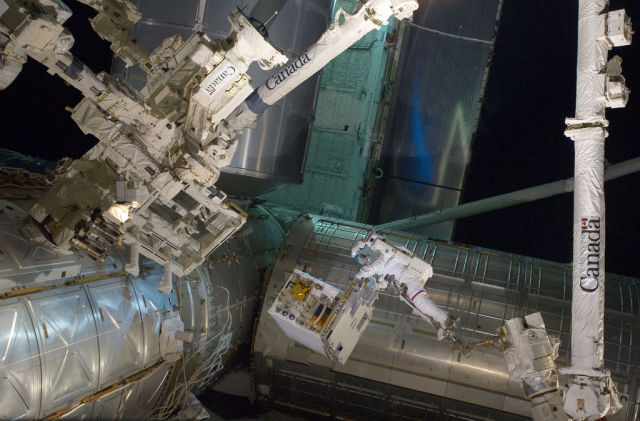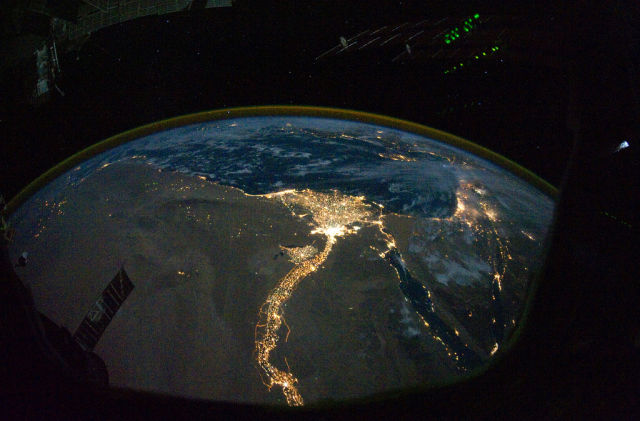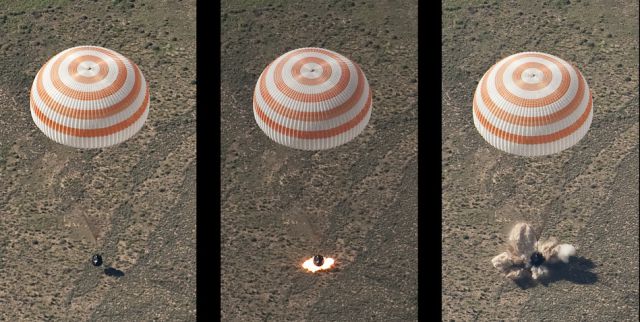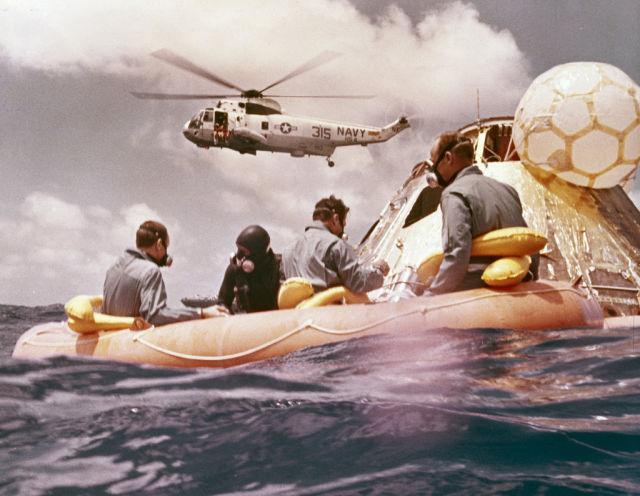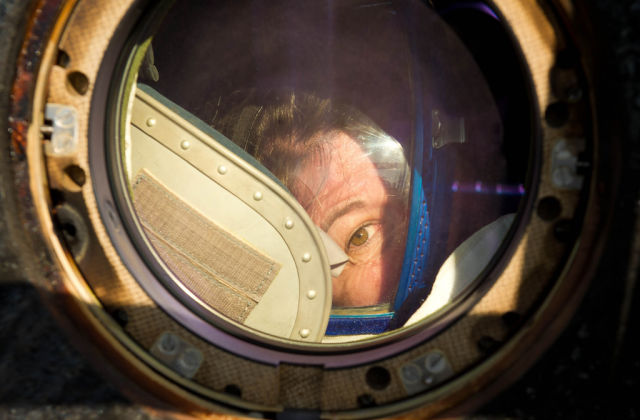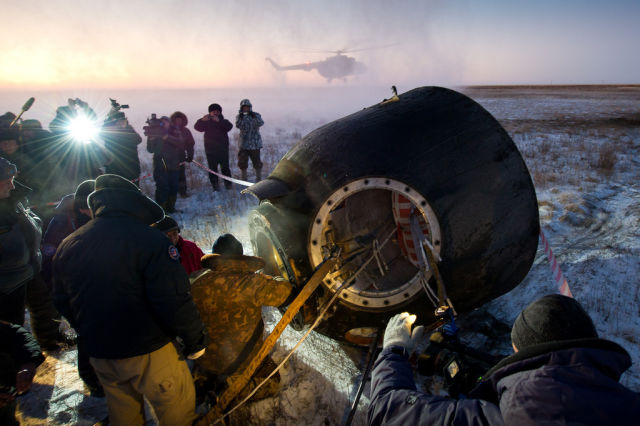These amazing images are NASA’s own collection of authentic space pics and have been compiled into an album to contrast reality with some of the special effects shots created in the Academy Awards nominated film, “Gravity”.
Sun Over Earth (NASA, International Space Station Science, 11:22:09)
The bright sun greets the International Space Station in this Nov. 22 scene from the Russian section of the orbital outpost, photographed by one of the STS-129 crew members.
Free Flying
Mission Specialist Bruce McCandless II, is seen further away from the confines and safety of his ship than any previous astronaut has ever been. This space first was made possible by the Manned Manuevering Unit or MMU, a nitrogen jet propelled backpack. After a series of test maneuvers inside and above Challenger's payload bay, McCandless went "free-flying" to a distance of 320 feet away from the Orbiter. This stunning orbital panorama view shows McCandless out there amongst the black and blue of Earth and space. (02/12/1984)
Sideways Over Australia at Night (NASA, International Space Station, 09:15:11)
This unique photographic angle, featuring the International Space Station's Cupola and crew activity inside it, other hardware belonging to the station, city lights on Earth and airglow was captured by one of the Expedition 28 crew members. The major urban area on the coast is Brisbane, Australia. The station was passing over an area southwest of Canberra.
The Ulitimage Photo Shoot Location - Targeting Earth Photographs From Orbit
Inside the Cupola, NASA astronaut Chris Cassidy, an Expedition 36 flight engineer, uses a 400mm lens on a digital still camera to photograph a target of opportunity on Earth some 250 miles below him and the International Space Station. Cassidy has been aboard the orbital outpost since late March and will continue his stay into September.
Sunset Over Earth
The thin line of Earth's atmosphere and the setting sun are featured in this image photographed by a crew member on the International Space Station while space shuttle Atlantis (STS-129) remains docked with the station. 11/23/09
Earths Horizon
Earths horizon against the blackness of space is featured in this image photographed by an Expedition 7 crewmember onboard the International Space Station (ISS) on October 4, 2003
Moon Framed
Earth and its Moon are nicely framed in this image taken from the aft windows of the Space Shuttle Discovery in 1998. Discovery - on mission STS-95 - was flying over the Atlantic Ocean at the time this image was taken.
Southern Lights Captured from Space
Reconfiguring the Station
Astronaut Sunita L. Williams, Expedition 14 flight engineer, used a pistol grip tool as she worked on the International Space Station.
Barcelona, Spain
STS-103 Shuttle Mission Imagery
Astronaut Steven L. Smith, payload commander, retrieves a power tool while standing on the mobile foot restraint at the end of the remote manipulator system (RMS). Many of the tools required to service the Hubble Space Telescope are stored on the handrail attached to the RMS visible in the photograph.
Earth and Space Shuttle Atlantis
Beautiful Earth and NASA's Space Shuttle Atlantis (STS-71), July 2, 1995 at 11:40:12 GMT As Seen From the Russian Federation Mir Space Station Latitude (LAT): 44.6 · Longitude (LON): 37.0 · Altitude (ALT): 210 Nautical Miles · Sun Azimuth (AZI): 240° · Sun Elevation Angle (ELEV): 57°
Storm Clouds Over the Atlantic Ocean Near Brazil
One of the Expedition 36 crew members aboard the International Space Station used a 50mm lens to record this image of a large mass of storm clouds over the Atlantic Ocean near Brazil and the Equator on July 4, 2013. A Russian spacecraft, docked to the orbiting outpost, partially covers a small patch of sunglint on the ocean waters in a break in the clouds.
Spacewalking Astronaut John Grunsfeld
Space Station on May 29, 2011
Backdropped by Earth's horizon and the blackness of space, the International Space Station is featured in this image photographed by an STS-134 crew member on the space shuttle Endeavour after the station and shuttle began their post-undocking relative separation. Undocking of the two spacecraft occurred at 11:55 p.m. (EDT) on May 29, 2011. Endeavour spent 11 days, 17 hours and 41 minutes attached to the orbiting laboratory.
Soyuz Spacecraft docked to the ISS during Joint Operations
View of Soyuz Spacecraft docked to the International Space Station (ISS). Earth limb is visible in the background. Photo was taken during STS-127 / Expedition 20 Joint Operations.
Hubble Space Telescope
The Hubble Space Telescope in a picture snapped by a Servicing Mission 4 crewmember just after the Space Shuttle Atlantis captured Hubble with its robotic arm on May 13, 2009, beginning the mission to upgrade and repair the telescope.
Close views of Paul Richards during an EVA
Not Lost in Space
Mission Specialist John Grunsfeld is positioned on a foot restraint on the end of Atlantis' remote manipulator system and Andrew Feustel (top center), mission specialist, participate in the mission's fifth and final spacewalk.
First U.S. Spacewalk - Gemini 4
Ed White made the United States' first spacewalk on 3 June 1965 during the Gemini 4 mission. The extra-vehicular activity (EVA) started at 19:45 UT (3:45 p.m. EDT) on the third orbit when White opened his hatch and used the hand-held manuevering oxygen-jet gun to push himself out of the capsule. The EVA started over the Pacific Ocean near Hawaii and lasted 23 minutes, ending over the Gulf of Mexico.
Thunderstorms on the Brazilian Horizon
Repairing the Station in Orbit
Expedition 35 Flight Engineers Chris Cassidy (pictured) and Tom Marshburn (out of frame) completed a spacewalk at 2:14 p.m. EDT May 11, 2013 to inspect and replace a pump controller box on the International Space Station’s far port truss (P6) leaking ammonia coolant. The two NASA astronauts began the 5-hour, 30-minute spacewalk at 8:44 a.m.
Hurricane Isabel
Working on COSTAR
STS-125 Mission Specialist Andrew Feustel positioned on a foot restraint on the end of Atlantis' remote manipulator system moves the Corrective Optics Space Telescope Axial Replacement (COSTAR) during the mission's third session of extravehicular activity (EVA) as work continues to refurbish and upgrade the Hubble Space Telescope.
Sun Rising on the Final Shuttle Mission
Astronaut Mike Fossum Transfers the Robotics Refueling Mission Payload During A Spacewalk on July 12, 2011
Cairo and Alexandria, Egypt at Night (NASA, International Space Station Science, 10:28:10)
Soyuz TMA-17 Lands
Apollo 12 Pacific Recovery
Expedition 27 Landing
Expedition 29 Landing

